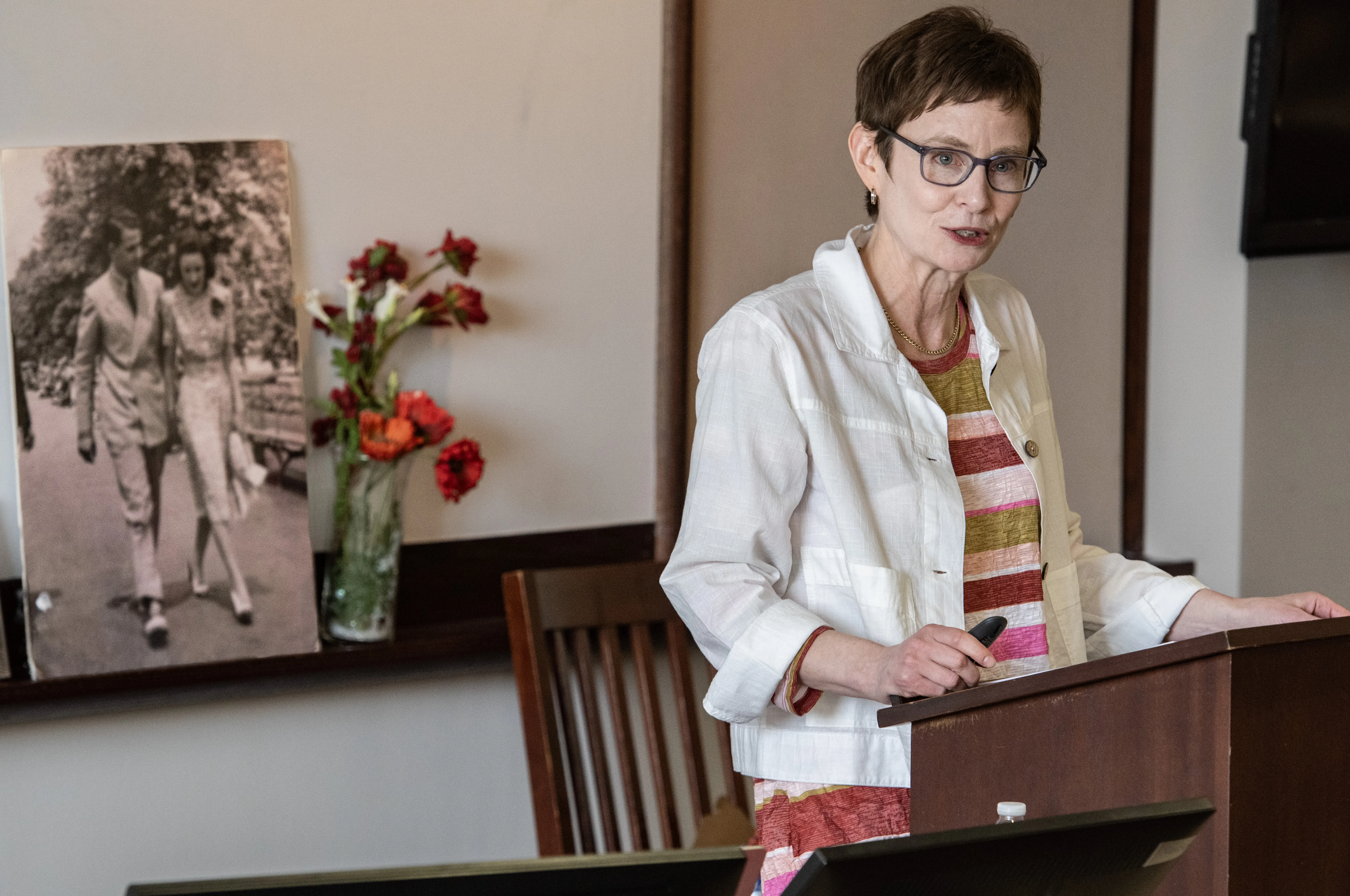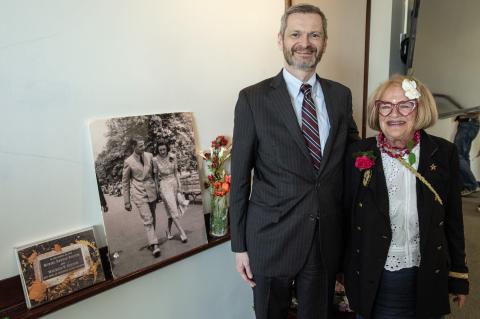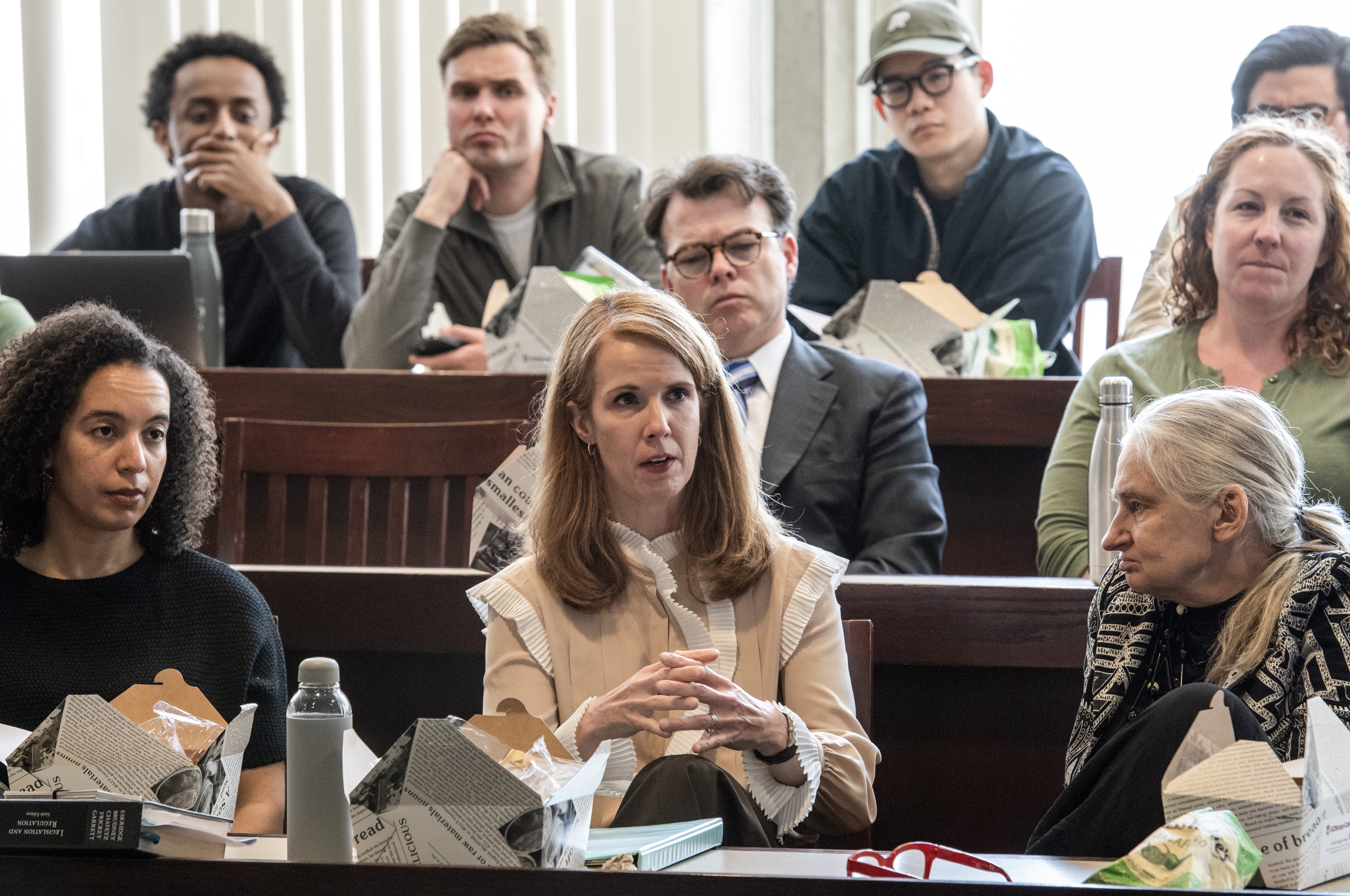Legal History, Women’s Voices, and the Politics of Abortion: Kate Masur Delivers 2025 Fulton Lecture

Kate Masur, the John D. MacArthur Chair and Professor of History at Northwestern University, delivered the 2025 Fulton Lecture in Legal History on April 28, focusing on the legal and cultural history of abortion in 19th century America.
Masur, who specializes in law and politics of the era, centered her lecture on the 1859 Vermont Supreme Court case, State v. Howard, which interpreted the state’s 1846 abortion criminalization statute. Through this lens, she examined how the legal system and prevailing social norms reflected and reinforced patriarchal ideas about women’s bodies, sexuality, and gender roles in society.
“The history produced by and for the courts often take zero account of the voices and experiences of women—just zero,” said Masur at the start of her talk. “I’m interested in how women understood and talked about—or did not talk about, as the case may be—their experiences of sex and pregnancy, especially in this period of the mid-19th century that has become so important to public discussions on the history of abortion.”
The Maurice and Muriel Fulton Lectureship in Legal History was created in 1985 through a gift made by Mr. Fulton, a member of the class of 1942, and his wife Muriel, an alumna of the college. The Fultons met at UChicago and throughout their lives maintained deep connections and an outstanding dedication of service to the University community.
An Abortion Gone Terribly Wrong
Masur began her lecture with the story of a young woman who died in 1857 after undergoing an abortion in a rural town in Vermont. The procedure was performed by a local physician with a dubious reputation. The woman’s death attracted public attention in part because of her family’s prominence in the community, leading to a criminal trial.
The case hinged on whether the doctor could be convicted under the 1846 abortion statute if the fetus may have already been dead at the time of the procedure. His attorneys argued the state had failed to prove otherwise and that he had acted in his patient’s best interest. He was convicted, and the Vermont Supreme Court affirmed the conviction.
“The chief justice emphasized that the 1846 statute was designed to regulate women’s behavior—to protect women’s lives and reproductive capabilities from the dangers of abortion procedures—and not to protect fetal life,” Masur said.
Ultimately, the State v. Howard decision reflects the cultural and political environment of its time: “Abortion criminalization was meant to ensure that women adhered to the gendered social norms of the period,” Masur said. “It was meant to prevent them from escaping the responsibilities and duties of motherhood.”
But what did women think about the Howard case? Or about abortion more generally? Masur explored these questions next, shifting her focus to women of the era and how they navigated their cultural constraints.
Women's Voices: Often Absent, Occasionally Defiant
Masur discussed archival sources indicating that women in small-town Vermont engaged in fierce public debates with local men, defending women’s right to intellectual pursuits.
One woman decried the many obstacles that women faced in their efforts to learn, write, and speak about topics like literature and science, including being denied access to the advanced educational opportunities that their male counterparts enjoyed. She also noted “household affairs” and other such duties that fell strictly on women as further constraints to their intellectual aspirations.
“I found [her] public irreverence extremely striking,” said Masur. “She clearly had no patience with her male peers and little desire to conform to expected standards of female rhetoric.”
Still, even bold women could only go so far when it came to speaking and writing about the issues that affected them.
“References to matters of rape, abortion, and pregnancy do not appear” in the local women’s rhetoric, said Masur. “Perhaps it shouldn’t be surprising that we don’t see them weighing in on more controversial and difficult-to-talk-about issues. This was a culture that had many prohibitions on talking about questions associated with unwanted pregnancy and abortion.”
Masur noted that even leading women’s rights activists of the era approached reproductive issues cautiously. Paulina Wright Davis, for example, championed better education about women’s health—stressing that mothers should instruct their daughters and sons about such matters— but stopped short of speaking overtly about pregnancy.
What History Can Tell Us
Masur closed her talk by returning to the outcome of State v. Howard: although the doctor was not convicted of causing the woman’s death, he was sentenced to two years in prison for attempting to produce an abortion.
“All of these events at the end of the 1850s, … show us the convergence of several different strands in American law and culture,” Masur concluded. “At this time, authorities, including the state Supreme Court, readily used state law to enforce their vision for how women should live.”
“It’s clear from this history,” Masur continued, “that the court’s power was enhanced by broader social norms that made it almost impossible to talk about the reality and consequences of sex outside of marriage, to critique a culture that singled out women for punishment, or even to recognize that many married women wanted to limit their fertility.”

